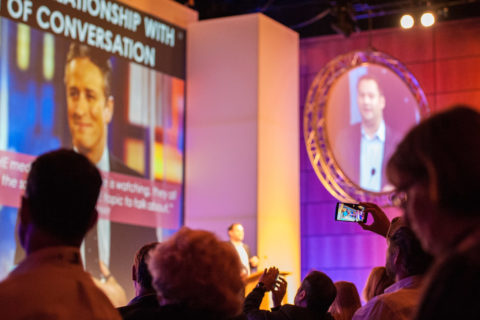By Jackie Lorch
This year, ESOMAR and SSI share milestone anniversaries.
ESOMAR is celebrating 70 years as the international research association, promoting the value of research and providing ethical and professional guidance to its members.
SSI marks 40 years of partnering with researchers to help them get reliable, accurate data for their research. From its roots creating the first-ever commercially available telephone sample to today providing multi-mode access to millions of respondents across the globe and a range of other research services, SSI has seen many changes in its four decades.
Anniversaries are a good time to look back at where we’ve been – and ahead to where we’re going.
MR of Days Gone By
The basic goal of market research has always been finding the right people, asking them the right questions and understanding their answers. In the 1930s, Daniel Starch was a research pioneer in on-the-street surveying to gauge the effectiveness of ads in newspapers and periodicals.
Gallup took Starch’s methods a step further with “aided recall;” withholding ads and asking respondents to rely on their memories of ads they had encountered and where they had seen them. Today we recognize that relying on recall is far from optimal. It is very difficult for someone to remember what ads they have seen or which products they bought and how much they paid.
Focus groups and in-person interviews allowed researchers to spend more time with respondents, but a big leap forward in research came with the arrival of commercially-available random digit telephone sampling in the 1970s. This is when, some would say, our industry perfected the art of calling people during dinner!
Phone technology made finding and surveying people easier and cheaper, but the rise of call-screening, mobile phones and number portability (so that one’s area code no longer identified where someone lived) made phone methodologies more challenging and expensive to execute.
Online research arrived in 2000. Online self-completion survey research was faster and more cost-effective than using live telephone interviewers. But the industry made few changes to questionnaires to accommodate this new method, and without an interviewer to encourage and clarify, there were quality challenges in the early days. More recently, lower response rates and respondents’ preference for giving their opinions on their cell phones has created challenges for this methodology too.
Market Research Today
Technology continues to transform research, and the pace of change is increasing, even for an industry that has been notoriously slow to change and adapt. Today, researchers are finding new and innovative ways to use mobile to engage with respondents: apps, geo-location, and in-context diary feedback among others.
We still have much to learn. Some of the biggest challenges facing researchers today are:
- Getting people to give us their opinions: We must make the respondent experience central to our research efforts.
- Maintaining trust in research data quality: We have made big strides in using technology to prevent fraud and identify inattention but we must continue to work to ask the right questions and let people answer them when and where they choose if we are to get the richest, most accurate data.
Delivering insights at the speed of today’s business: Using technology to automate many aspects of research will allow researchers to focus instead on what they do best: identifying the research problem, crafting a solution and telling the story. And automation can help researchers do this faster and more efficiently than ever before.
Demonstrating value and staying relevant: If business people can now ask their own questions and do their own analyses using DIY tools and dashboards, how does research earns its keep and demonstrate its specific value to customers?
Market Research of the Future
Where is market research headed next? In the next decade or so:
- Much of what we do today with human labor will be done by machine.
- We’ll ask a fraction of the number of questions we do now and use secondary data to understand much of the “who, what, when and where.” This should make for a shorter, easier and more pleasant experience for the people who give us their opinions.
- People’s attitudes to sharing data will evolve. This, along with data privacy legislation is likely to significantly impact the data we can access. Today people are concerned about how their personal data is stored and used, but they still use social media, play location-based games, and automate their homes with app-based devices. Will privacy concerns outweigh convenience or fun at some point? Advances like implanted microchips will push the envelope.
- The Internet of Things: Smart devices in private homes are just the beginning. Cities like Barcelona are already using smart, networked technology like street sensors and LED lights to anticipate citizens’ needs and reduce energy waste and pollution. How can we tap into the vast number of networked objects to better understand and anticipate people’s needs – without being overly intrusive and seeming “creepy?” Balancing convenience against the risk of intrusiveness will be a major challenge.
- Biometrics and neuroscience. The ability to easily track activity via biometrics, and to measure emotion by understanding changes within the brain is in its infancy, and has many potential uses in research. Will it become commonplace to tap into people’s brains to predict their behavior more accurately than simply asking them?
Regardless of how we find the people and collect the data, the fundamentals – knowing who we want to understand better and what we want to know from them, then correctly interpreting their data – will remain. Getting reliable data about how humans think, feel and behave is a timeless need.
Jackie Lorch is VP Global Knowledge Management, SSI


